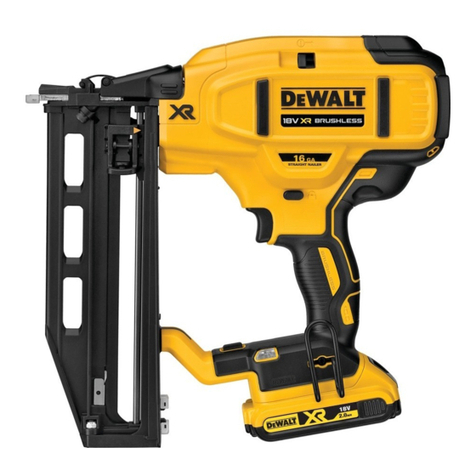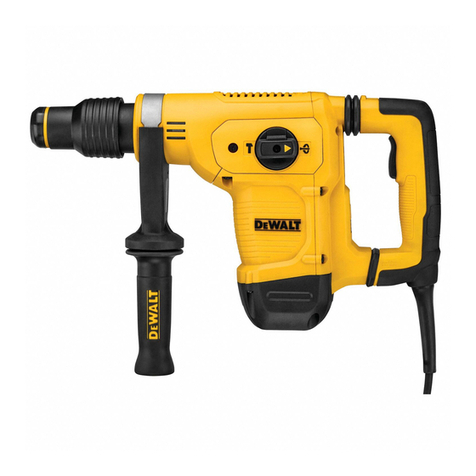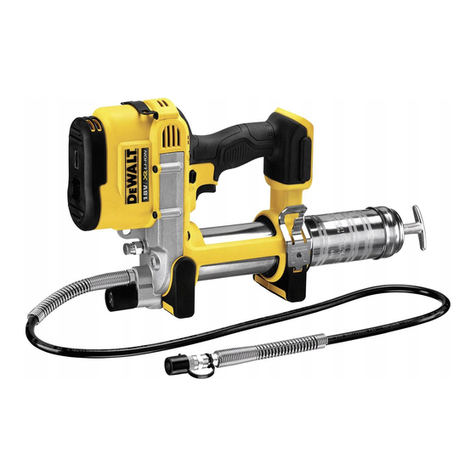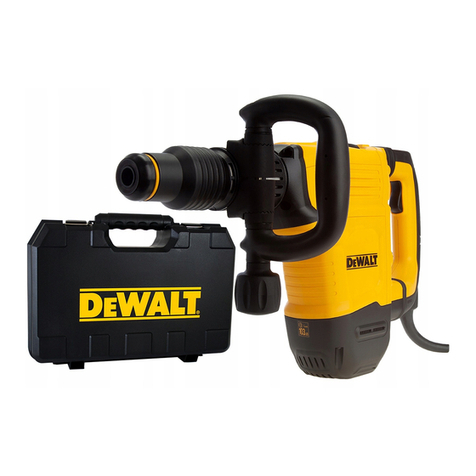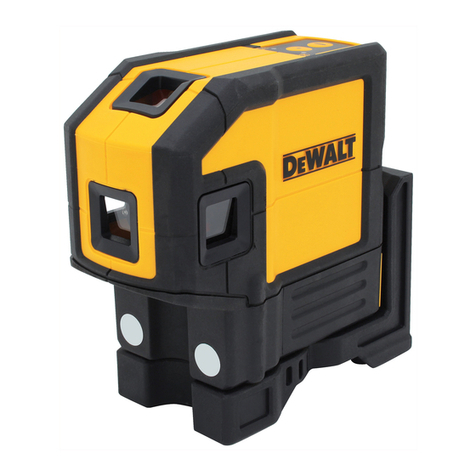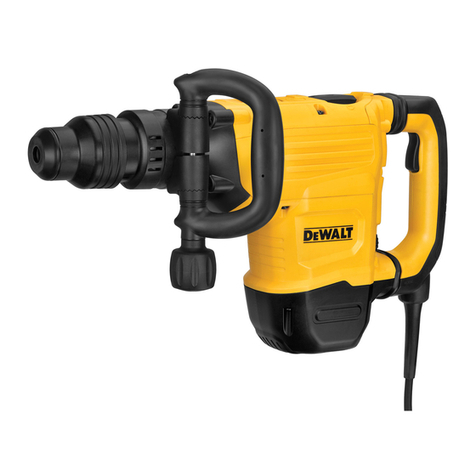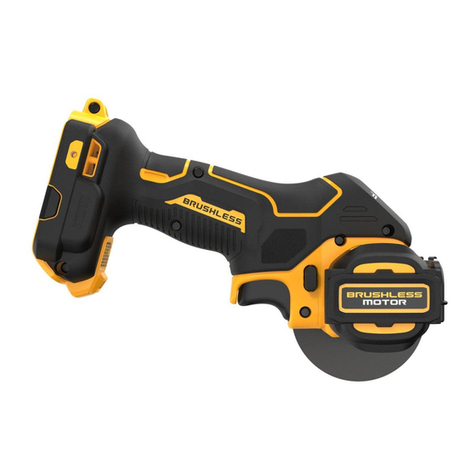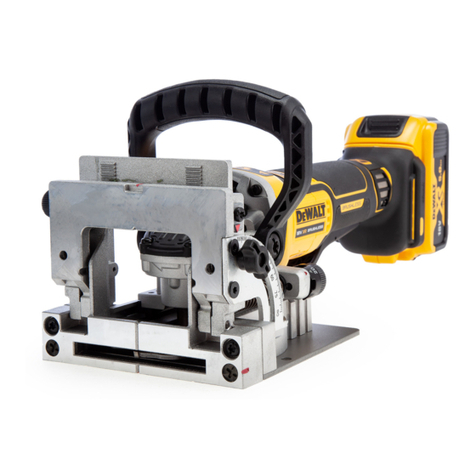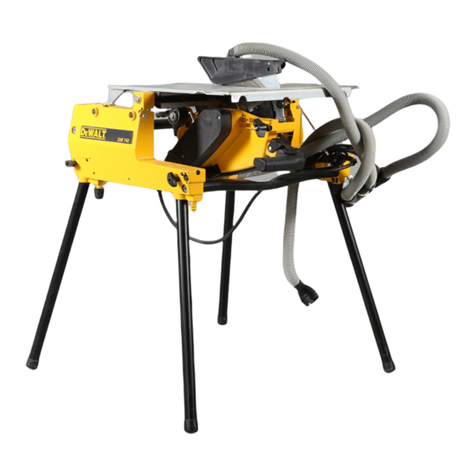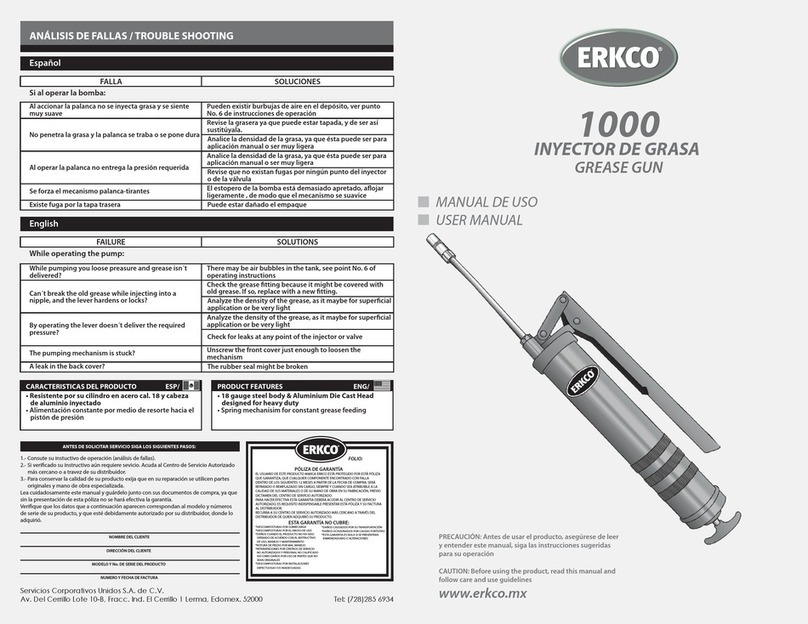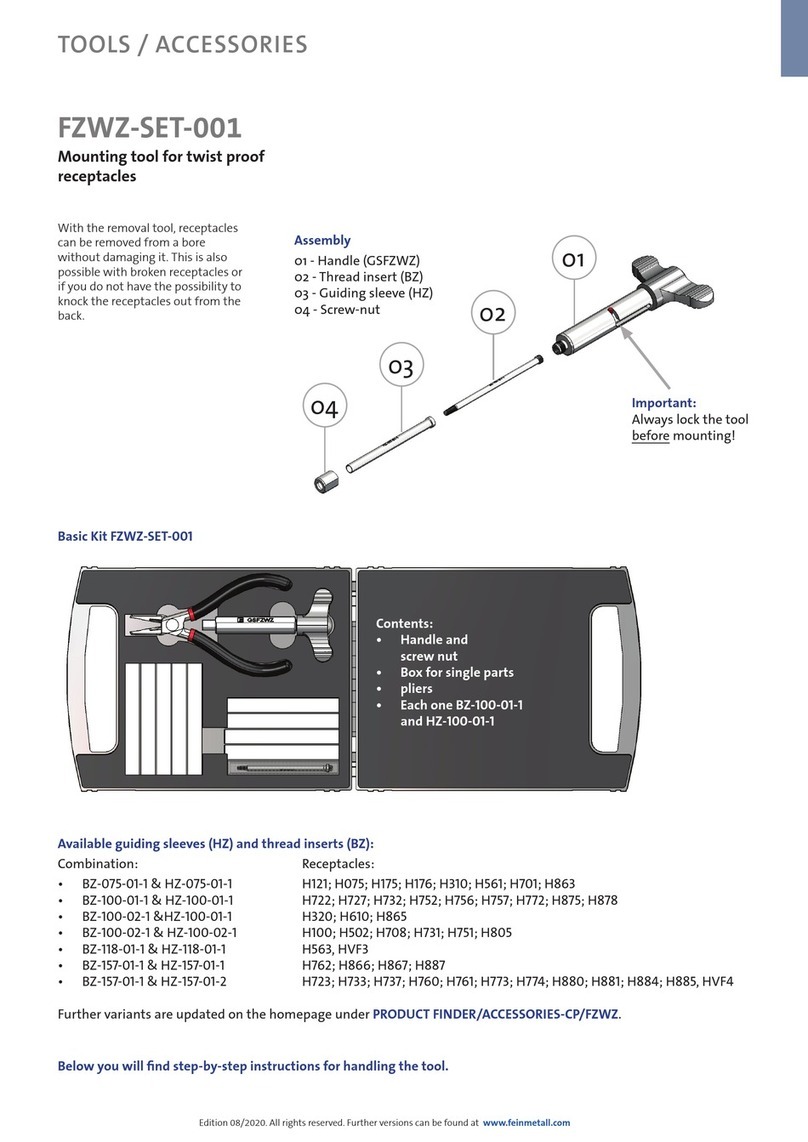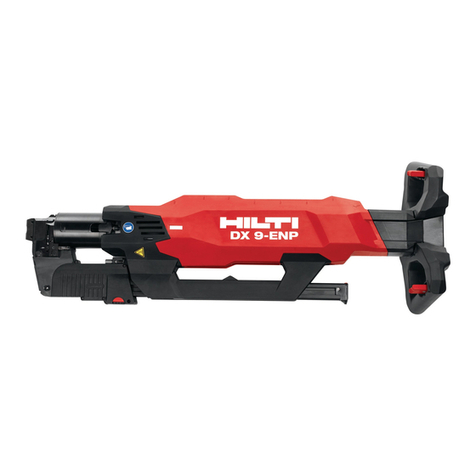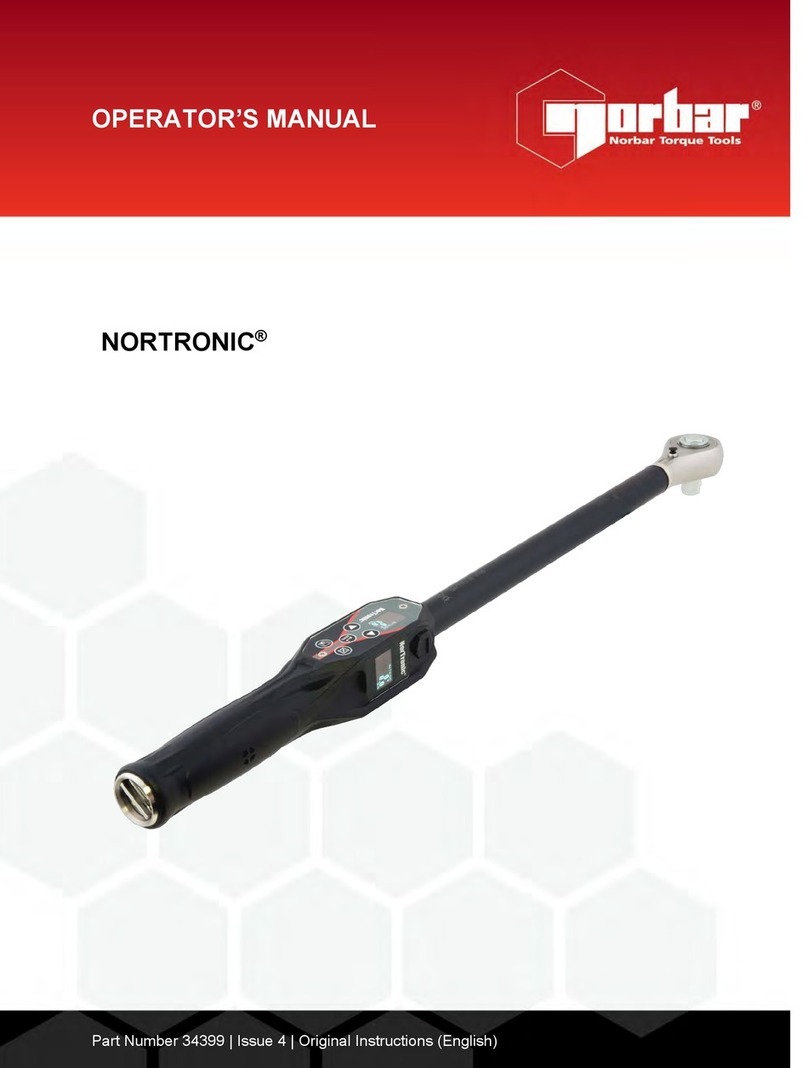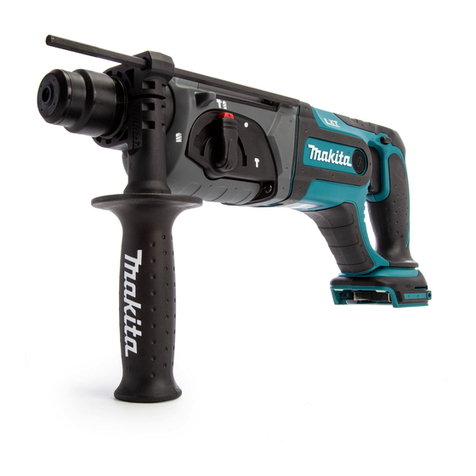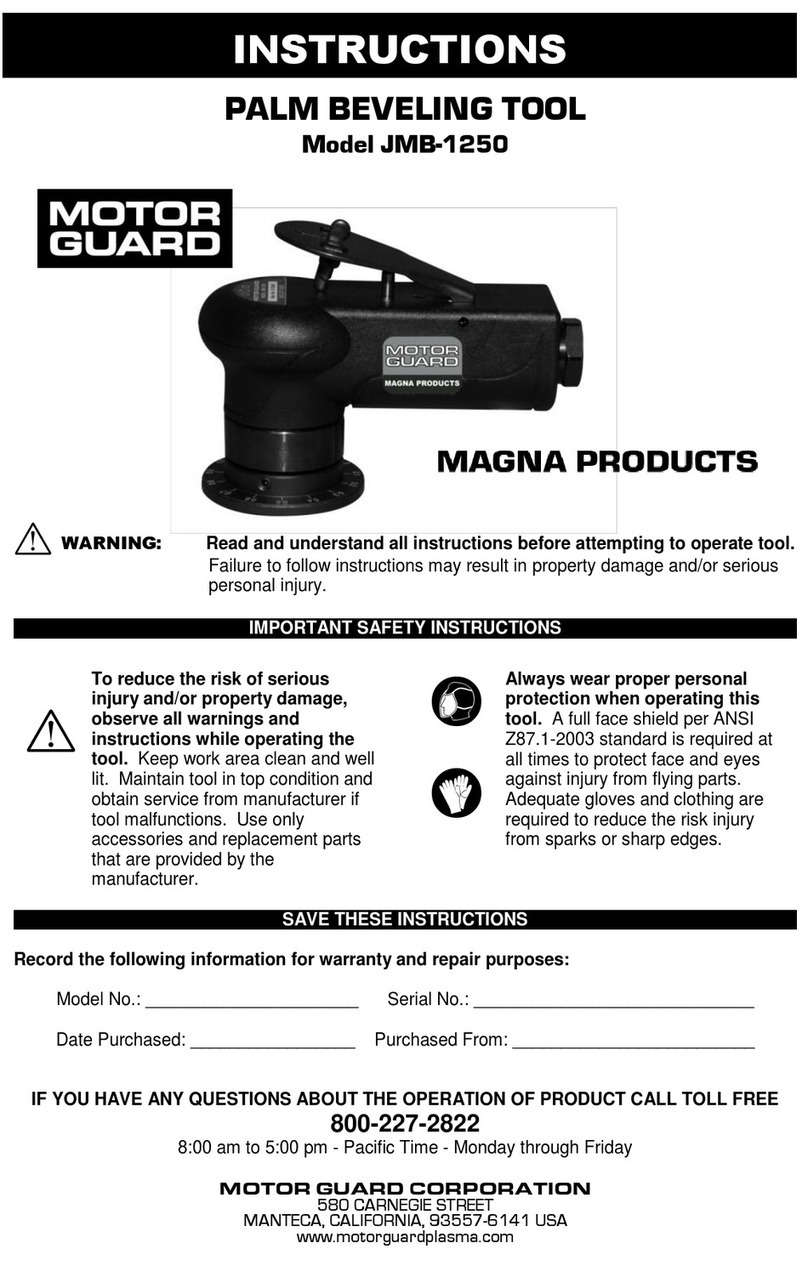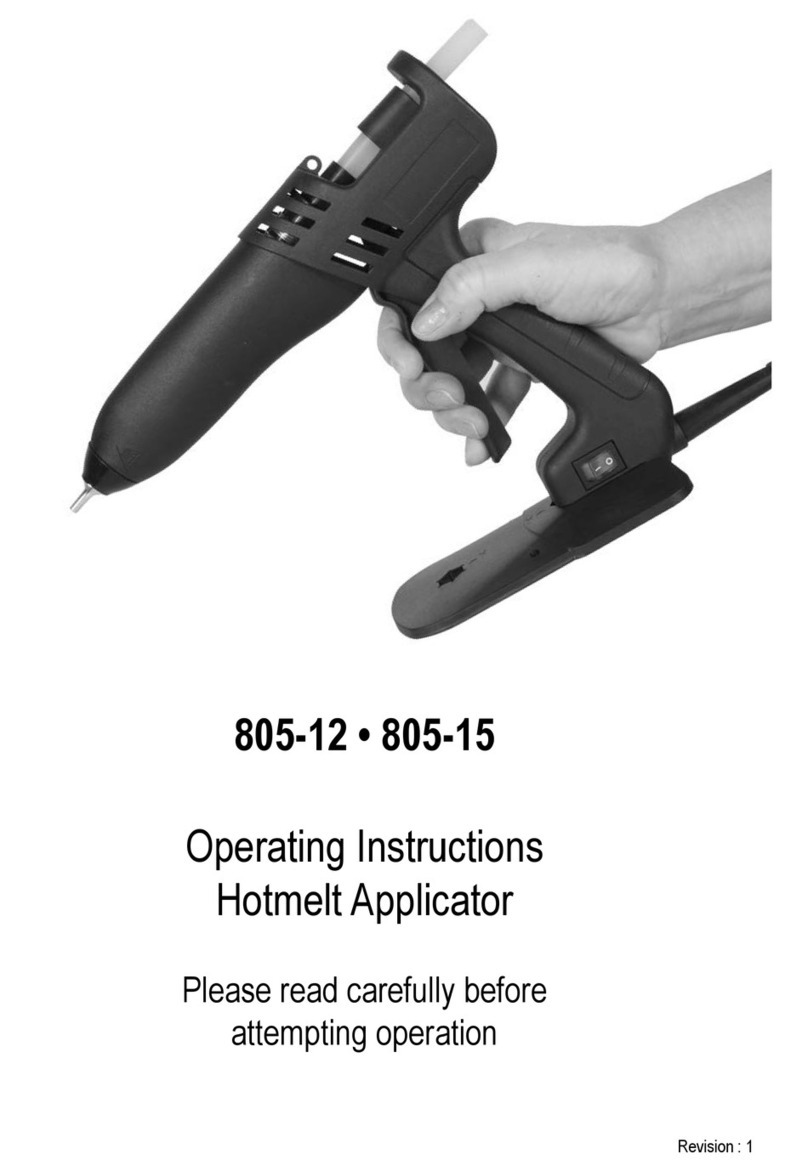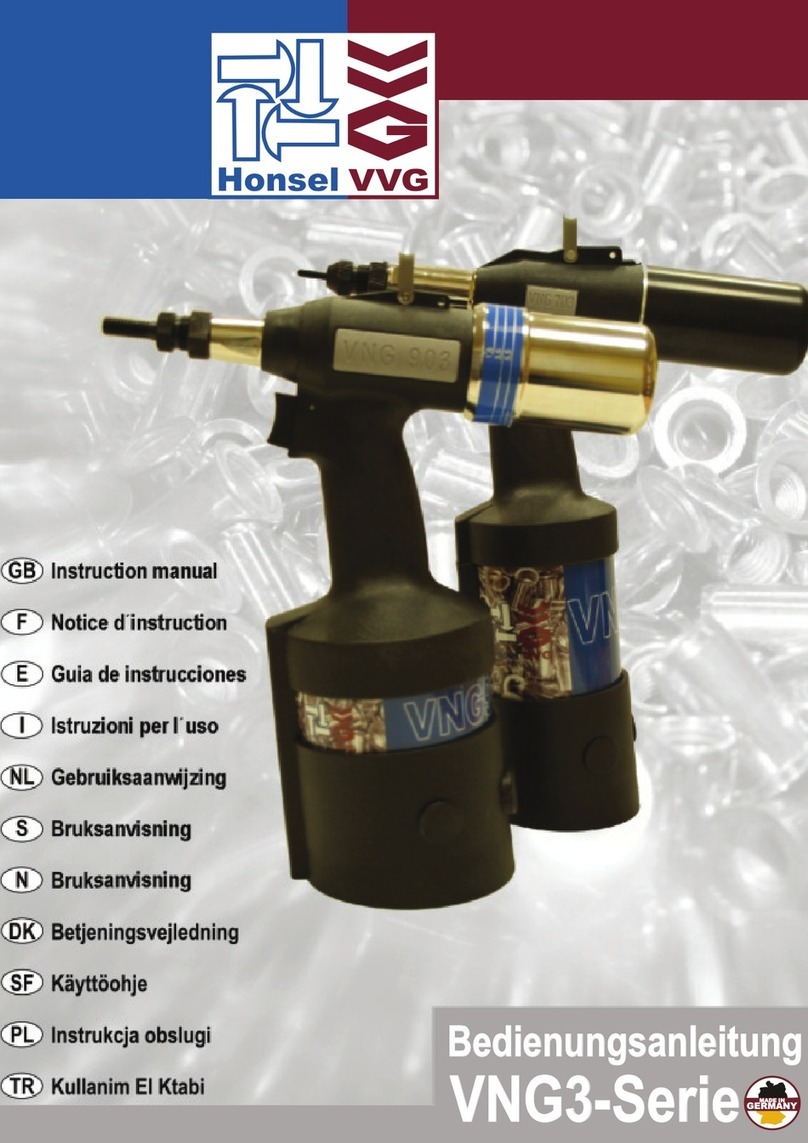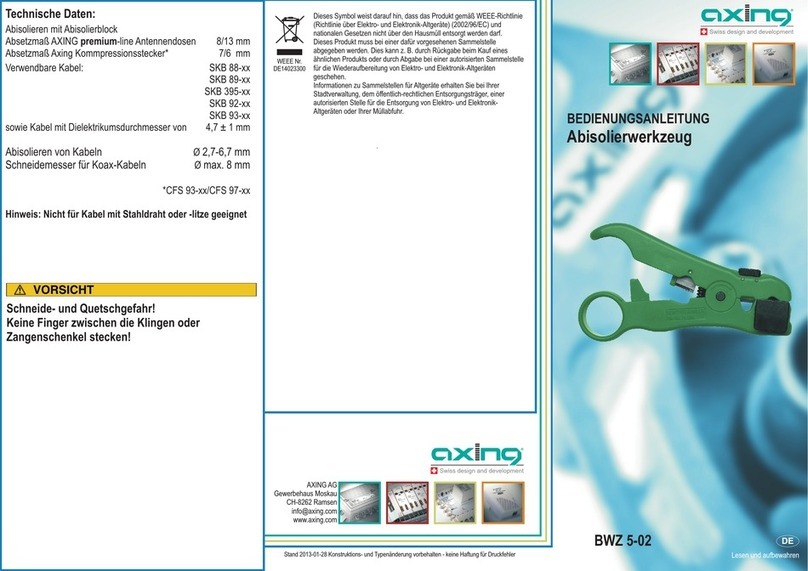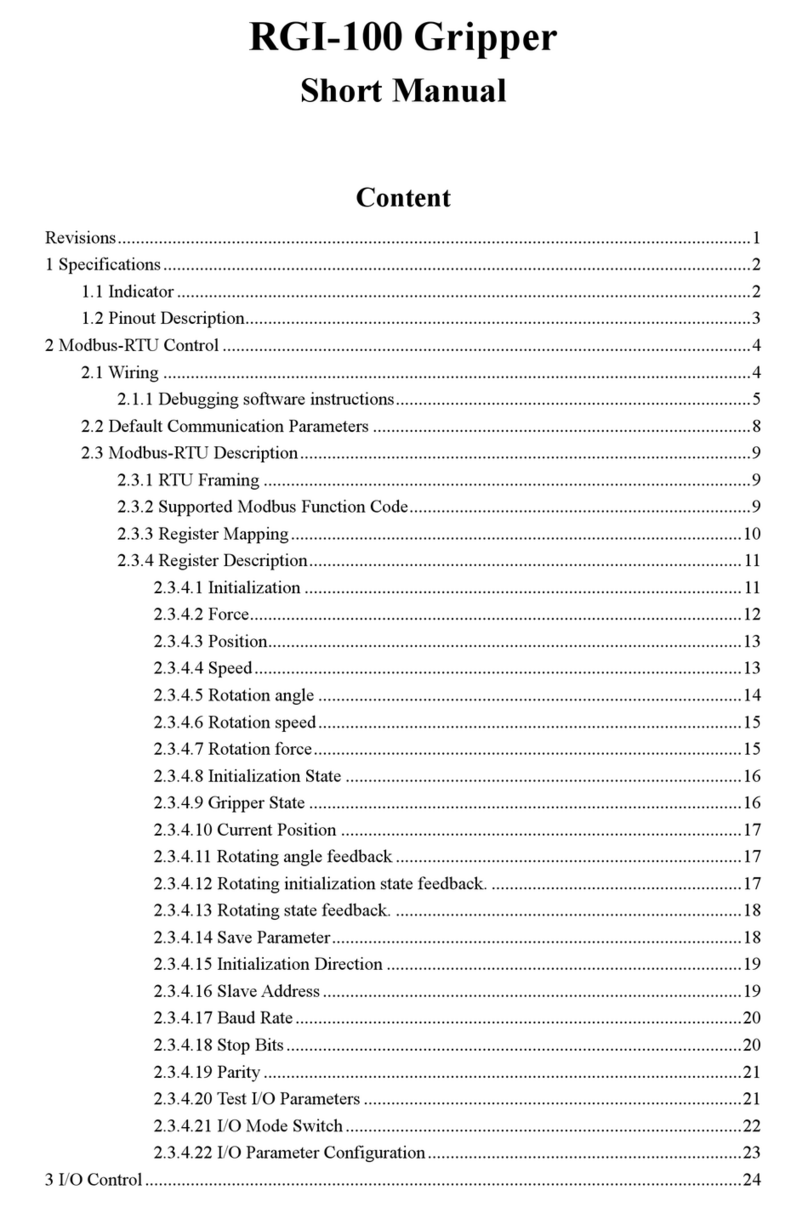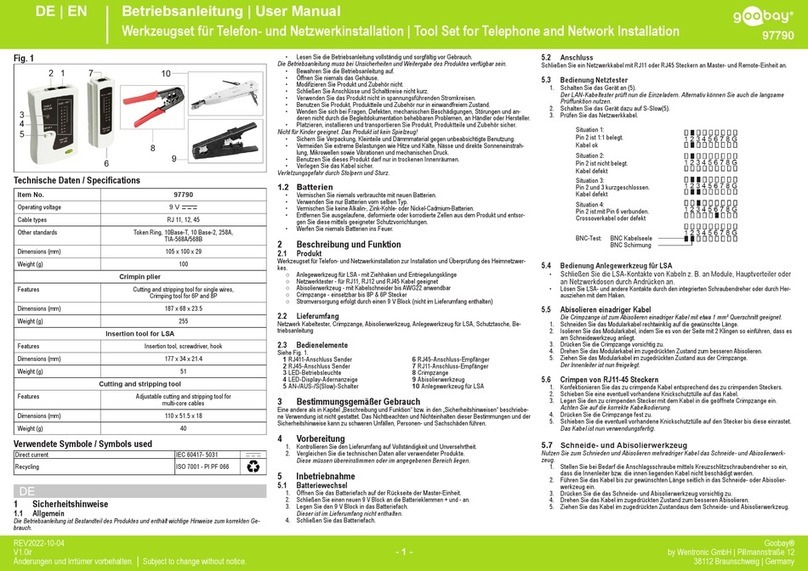Pencil Line
DIAGRAM B
MALE JOINT—
WORKTOP FACE
DOWN
Left Hand 90° Joints
Page 6
1. FEMALE JOINT Refer to the diagrams on the different joints
available. For the female cut in your worktop, position the jig as
shown in diagram Aand the worktop face up and the post formed
(curved edge) towards you.
2. Insert three pins in the holes marked ‘♀’.
3. Insert the 4th pin in the hole dependant on your worktop width. e.g. If
your worktop is 650mm wide (as shown in diagram A) then insert the
4th pin in the hole marked 65.
4. Make sure the 3 pins in the holes marked with ’♀’are firmly pushed
against the front post formed edge and the pin in the hole marked
with the worktop width is pushed firmly against the edge of the
worktop (see diagram A)
5. Clamp the jig to the worktop checking that all 4 pins are still against
the worktop. Make sure the clamps will not obstruct the router path.
6. CUTTING Position the router in the far left side of the central
slot. Set the router to cut a depth of 10mm.
7. IMPORTANT - Position the router in the slot and cut from left to
right, pulling the router against the edge of the slot closest to
you.
8. Remove the router, and start again from the far left of the central
slot, but increase the depth a further 10mm.
9. Follow steps 6– 8, until cut is complete.
10. For the final finishing cut, position the router again in the far left side
of the central slot, and set the router to cut at the full depth of the
worktop. Again, cut from left to right but apply the pressure to the
edge furthest away from you.
11. MALE JOINT For the male cut in your worktop, prepare the
worktop face down and turn the jig over from the face used
previously.
12. Insert 2 pins in holes marked ‘♂’.
13. Refer to the page on ‘cutting to length’ on page 8 to find out where to
mark the pencil line to determine the position of the jig along the
length of the worktop.
14. Make sure the 2 pins in the holes marked ‘♂’ are firmly pushed
against the post formed edge (see diagram B)
15. Clamp the jig to the worktop checking that both pins are still against
the worktop. Make sure the clamps will not obstruct the router path.
16. Follow steps 6 to 10 for cutting the worktop.
17. FEMALE BOLT RECESSES Take the worktop into which you have
cut the female cut and position the worktop face down.
18. Position the jig as shown in diagram C, and insert 4 pins in the
holes which have a symbol resembling a worktop connector bolt
recess as indicated on diagram C.
19. Make sure the 4 pins are firmly pushed against the front cut out and
the edge of the worktop.
20. Clamp the jig to the worktop checking that all 4 pins are still firmly
against the worktop. Make sure the clamps will not obstruct the
router path.
21. You will need a depth of 20mm for the worktop connectors. Do not
exceed 10mm per cut.
22. Cut the bolt recesses out, each time clearing the waste material after
each cut.
23. MALE BOLT RECESSES Take the worktop into which you have
cut the male cut and position the worktop face down.
24. Position the jig as shown in diagram D and insert 4 pins in the holes
which have a symbol resembling a worktop connector bolt recess -
this was shown in diagram C.
25. Make sure the 4 pins are firmly pushed against the front cut out and
the edge of the worktop.
26. Clamp the jig to the worktop checking that all 4pins are still firmly
against the worktop. Make sure the clamps will not obstruct the
router path.
27. You will need a depth of 20mm for the worktop connectors. Do not
exceed 10mm per cut.
28. Cut the bolt recesses out, each time clearing the waste material after
each cut.
DIAGRAM D
MALE BOLT RECESS -
WORKTOP FACE DOWN.
DIAGRAM C
FEMALE BOLT RECESS -
WORKTOP FACE DOWN.
DIAGRAM A
FEMALE JOINT -
WORKTOP FACE UP
Pencil Line
Right Hand 90° Joints
Page 7
1. FEMALE JOINT For the female cut in your worktop, position the
jig as shown in diagram A and the worktop face down and the post
formed (curved edge) towards you.
2. Insert three pins in the holes marked ‘♀’.
3. Insert the 4th pin in the hole dependant on your worktop width, e.g.
If your worktop is 650mm wide then insert the 4th pin in the hole
marked 65 (see diagram A).
4. Make sure the 3 pins in the holes marked ’♀’ are firmly pushed
against the front post formed edge and the pin in the hole marked
with the worktop width is pushed firmly against the edge of the
worktop (see diagram A)
5. Clamp the jig to the worktop double-checking that all 4 pins are still
against the worktop. Make sure the clamps will not obstruct the
router path.
6. CUTTING Position the router in the far left side of the central slot.
Set the router to cut a depth of 10mm.
7. IMPORTANT - Position the router in the slot and cut from left
to right, pulling the router against the edge of the slot closest
to you.
8. Remove the router, and start again from the far left of the central
slot, but increase the depth a further 10mm.
9. Follow steps 6 – 8, until cut is complete.
10. For the final finishing cut, position the router again in the far left
side of the central slot, and set the router to cut at the full depth of
the worktop. Again, cut from left to right but apply the pressure to
the edge furthest away from you.
11. MALE JOINT For the male cut in your worktop, prepare the
worktop face up and turn the jig over from the face used previously.
12. Insert 2 pins in holes marked ‘♂’.
13. Refer to the page on ‘cutting to length' on page 8 to find out where
to mark the pencil line to determine the position of the jig along the
length of the worktop.
14. Make sure the 2 pins in the holes marked ’♂’are firmly pushed
against the post formed edge (see diagram B)
15. Clamp the jig to the worktop checking that both pins are still
against the worktop. Make sure the clamps will not obstruct the
router path.
16. Follow steps 6 to 10 for cutting the worktop.
17. FEMALE BOLT RECESSES Take the worktop into which you
have cut the female cut and position the worktop face down.
18. Position the jig as shown in diagram C, and insert 4 pins in the
holes which have a symbol resembling a worktop connector bolt
recess as indicated in diagram C.
19. Make sure the 44 pins are firmly pushed against the front cut out
and the edge of the worktop (see diagram C).
20. Clamp the jig to the worktop checking that all 4 pins are still firmly
against the worktop. Make sure the clamps will not obstruct the
router path.
21. You will need a depth of 20mm for the worktop connectors. Do not
exceed 10mm per cut.
23. Cut the bolt recesses out, each time clearing the waste material
after each cut.
23. MALE BOLT RECESSES Take the worktop into which you have
cut the male cut and position the worktop face down.
24. Position the jig as shown in diagram D and insert 4 pins in the
holes which have a symbol resembling a worktop connector bolt
recess as indicated in diagram C.
24. Make sure the 4 pins are firmly pushed against the front cut out
and the edge of the worktop (see diagram D).
25. Clamp the jig to the worktop checking that all 4 pins are still firmly
against the worktop. Make sure the clamps will not obstruct the
router path.
26. You will need a depth of 20mm for the worktop connectors. Do not
exceed 10mm per cut.
27. Cut the bolt recesses out, each time clearing the waste material
after each cut.
DIAGRAM A
FEMALE JOINT -
WORKTOP FACE DOWN
DIAGRAM B
MALE JOINT—
WORKTOP FACE UP
DIAGRAM C
FEMALE BOLT RECESS -
WORKTOP FACE DOWN.
DIAGRAM D
MALE BOLT RECESS —
WORKTOP FACE DOWN.

